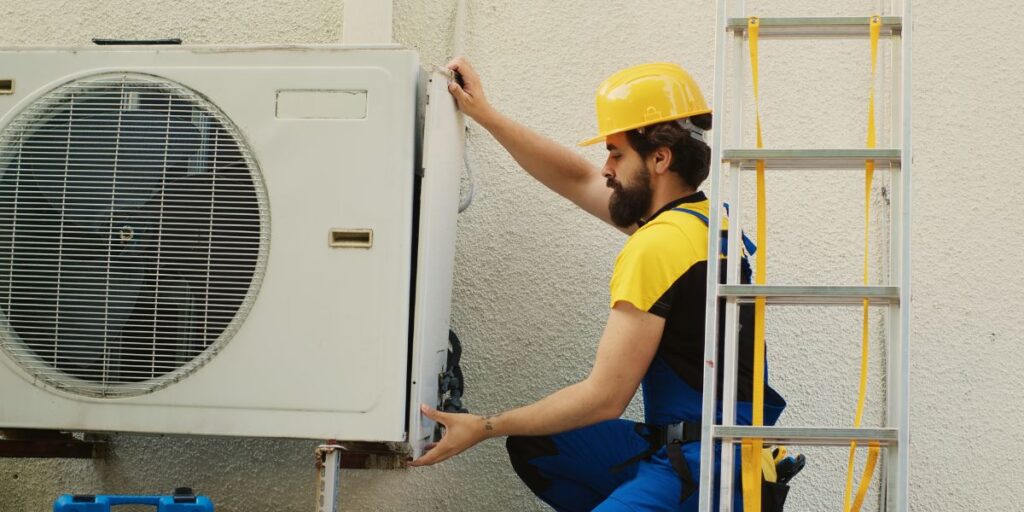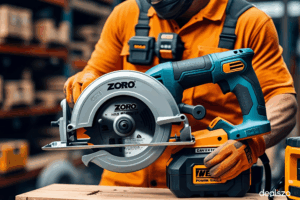Living in a hot country like Oman means relying heavily on your air conditioner to stay comfortable. While inverter air conditioner models are popular for their energy efficiency, many still use non-inverter ACs. Regular maintenance is essential to keep your non-inverter AC running smoothly in extreme heat.
In this guide, we’ll share simple yet effective tips for maintaining your non-inverter AC, improving cooling performance, and extending its lifespan—even in Oman’s scorching summers.
Why Non-Inverter AC Maintenance Matters in Hot Climates
Non-inverter air conditioners work at a fixed speed, consuming more energy and putting extra strain on them in hot weather. Without proper care, dust, dirt, and high temperatures can reduce cooling efficiency, increase electricity bills, and even cause breakdowns.
Following these maintenance steps ensures your non-inverter AC runs efficiently, just like an inverter air conditioner, but without the higher upfront cost.
1. Clean or Replace the Air Filter Regularly
The air filter traps dust, pollen, and other particles, preventing them from entering your home. Over time, a clogged filter restricts airflow, forcing the AC to work harder.
How to Clean the Filter:
-
Turn off the AC and remove the filter.
-
Wash it gently with lukewarm water and mild soap.
-
Let it dry completely before reinstalling.
For best results, clean the filter every two weeks in peak summer. If damaged, replace it immediately.
2. Keep the Outdoor Unit Clean and Unblocked
The outdoor unit (condenser) releases heat from your home. In Oman’s dusty environment, dirt and debris block airflow, reducing cooling efficiency.
Maintenance Tips for the Outdoor Unit:
-
Remove leaves, dirt, and cobwebs around the unit.
-
Gently clean the fins with a soft brush or cloth.
-
Ensure at least 2 feet of clearance around the unit for proper airflow.
Avoid using high-pressure water, as it can damage the fins.
3. Check and Clean the Evaporator Coils
The evaporator coils inside the indoor unit absorb heat from the air. Dust buildup on these coils reduces cooling efficiency.
How to Maintain Evaporator Coils:
-
Turn off the power before cleaning.
-
Use a soft brush or coil cleaner to remove dust.
-
For deep cleaning, consider professional servicing once a year.
This step helps your non-inverter AC cool as effectively as an inverter air conditioner.
4. Ensure Proper Refrigerant Levels
Low refrigerant levels make your AC struggle to cool, increasing power consumption. The refrigerant may need a refill if you notice weak airflow or warm air.
Signs of Low Refrigerant:
-
The AC takes longer to cool.
-
Ice forms on the coils.
-
Hissing or bubbling noises from the unit.
Only a certified technician should handle refrigerant refills or leaks.
5. Inspect and Clean the Drainage Pipe
The AC removes humidity from the air, sending water through a drainage pipe. A clogged pipe can cause water leakage or mold growth.
How to Clear the Drain Pipe:
-
Locate the drain pipe (usually near the outdoor unit).
-
Use a thin wire or pipe cleaner to remove blockages.
-
Pour a mix of water and vinegar to prevent algae buildup.
6. Check the Thermostat Settings
A faulty thermostat can make your AC run longer than needed, wasting energy.
Thermostat Maintenance Tips:
-
Place the thermostat away from heat sources like windows.
-
Use a programmable thermostat for better efficiency.
-
Replace old thermostats with digital ones for accuracy.
This small adjustment can help your non-inverter AC perform closer to an inverter air conditioner in efficiency.
7. Schedule Professional Servicing Annually
While DIY maintenance helps, a professional check-up ensures all parts work correctly. Technicians can detect issues early, preventing costly repairs.
What Professionals Do:
-
Check electrical connections.
-
Lubricate moving parts.
-
Test refrigerant pressure.
-
Inspect overall performance.
For Oman’s extreme heat, servicing before summer is highly recommended.
8. Use Fans to Support Cooling
Ceiling or standing fans help circulate cool air, reducing the workload on your AC. This simple trick can lower energy consumption and improve comfort.
9. Avoid Overworking Your AC
Running the AC continuously in extreme heat can wear it out faster. Follow these tips to reduce strain:
-
Keep blinds or curtains closed during peak sunlight.
-
Set the temperature to a comfortable level (24-26°C is ideal).
-
Turn off the AC when not needed.
While an inverter air conditioner adjusts its speed to save energy, a non-inverter AC benefits from smart usage habits.
10. Monitor Unusual Noises or Smells
Strange sounds (grinding, squealing) or bad odors indicate potential problems. Addressing them early prevents major breakdowns.
Common Issues to Watch For:
-
Burning smell → Electrical issue.
-
Musty odor → Mold in ducts.
-
Loud noises → Loose or damaged parts.
If you notice any of these, contact a technician immediately.
Final Tips for Non-Inverter AC Longevity in Oman
-
Shade the Outdoor Unit: Protect it from direct sunlight to improve efficiency.
-
Upgrade Insulation: Better-insulated homes stay cooler, reducing AC workload.
-
Use Energy-Saving Mode: If your AC has this feature, enable it.
While an inverter air conditioner is designed for efficiency, proper care keeps a non-inverter AC running smoothly even in Oman’s harsh heat.
To Read More Blog: Europe Air Conditioner Market : Key Drivers, Regional Insights & Forecast
Conclusion
Maintaining a non-inverter AC in hot weather requires regular cleaning, smart usage, and occasional professional help. By following these steps, you can enhance cooling performance, cut energy costs, and extend your AC’s lifespan—just like an inverter air conditioner but without a higher price tag.






